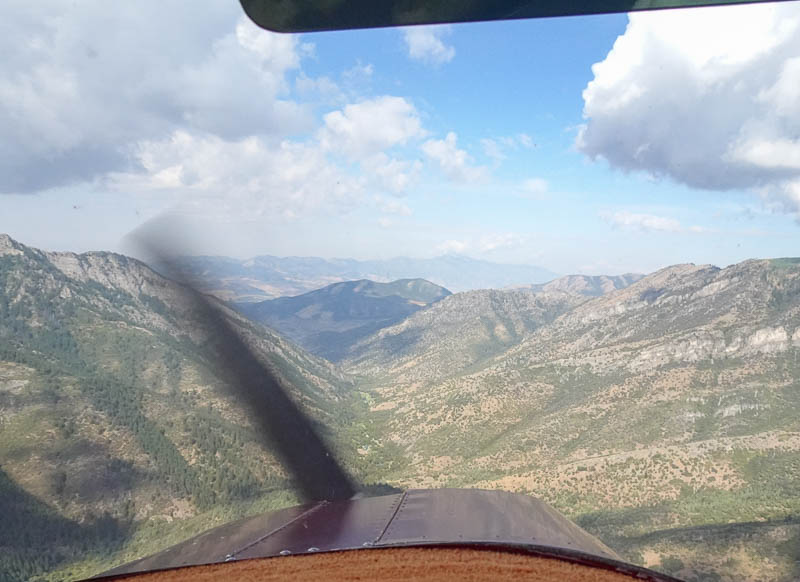
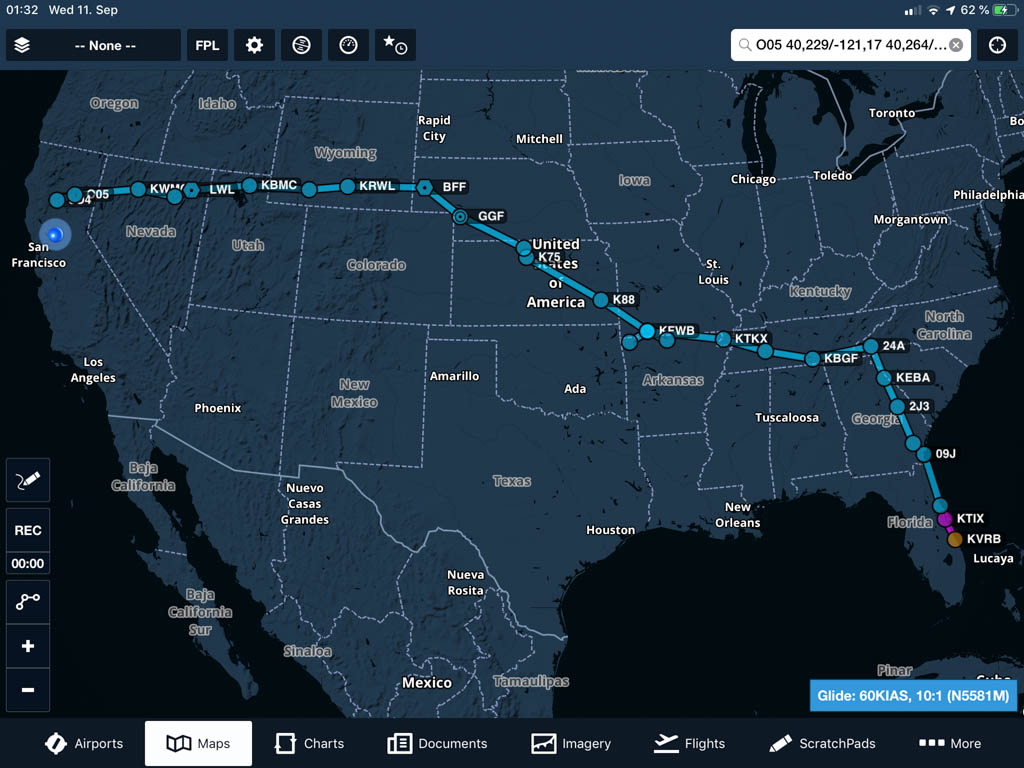
5 weeks later, I was back in Vero Beach (KVRB). Plan was to fly N5581M to Corning (0o4), California, taking the northern route.
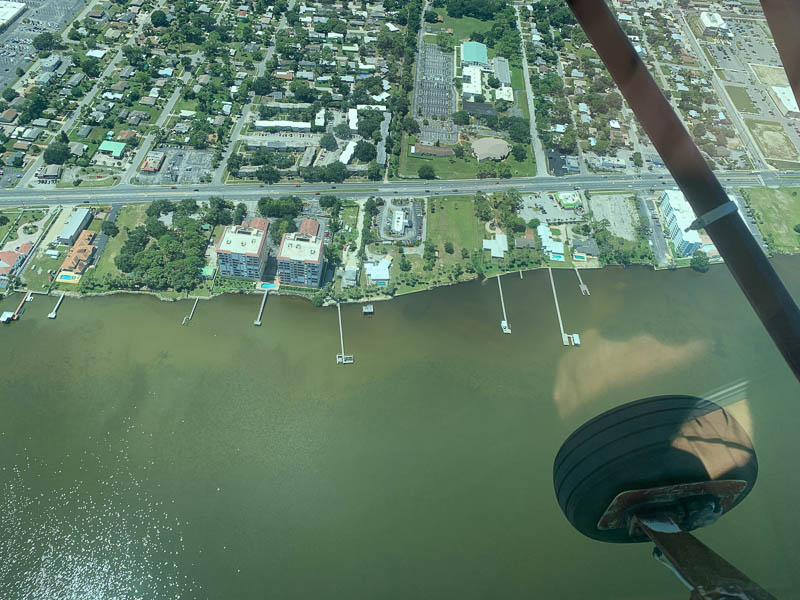
August 27th, 2019. First day. I flew northbound along the coastline, annoyed by the dense traffic, complex airspace structure and many clouds. Clouds can grow and rise much quicker than a 140 can climb and while I always outrun the clouds, I often had to change my course and occasionally even my destination, to stay VMC. Did I already say that experience is important? I envy those, who have a lot of it. Flying alone, I couldn't tap into the experience of others. All my years as an airline captain don't help me much to decide what that weather ahead means for me. And I missed the possiblity to discuss the facts, options, risks and decisions with my co-pilot. I believe that the much higher accident rate of general aviation when compared to air transport, is mainly, because lonely decisions are often bad decisions. How to avoid them?
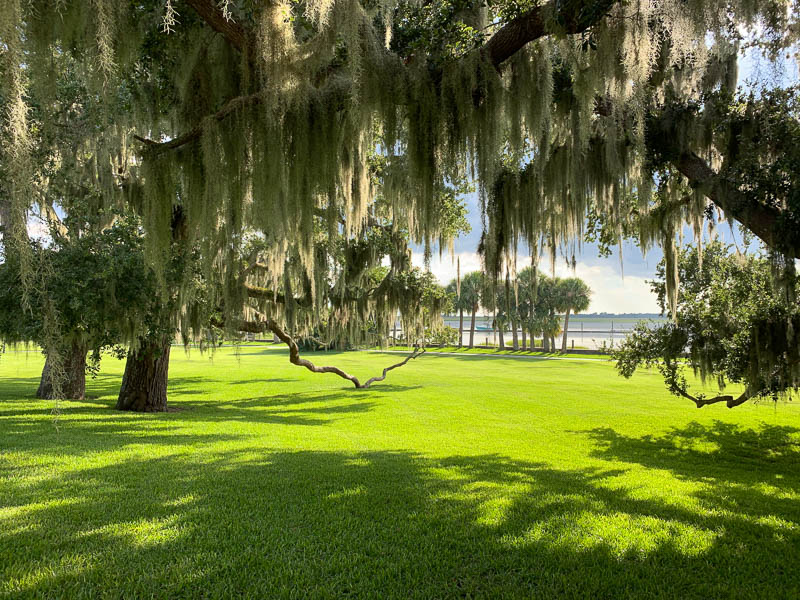
I brought my camping gear and flew to beautiful places like Jekyll Islands (09J), where I put up my tent not far from the airport.
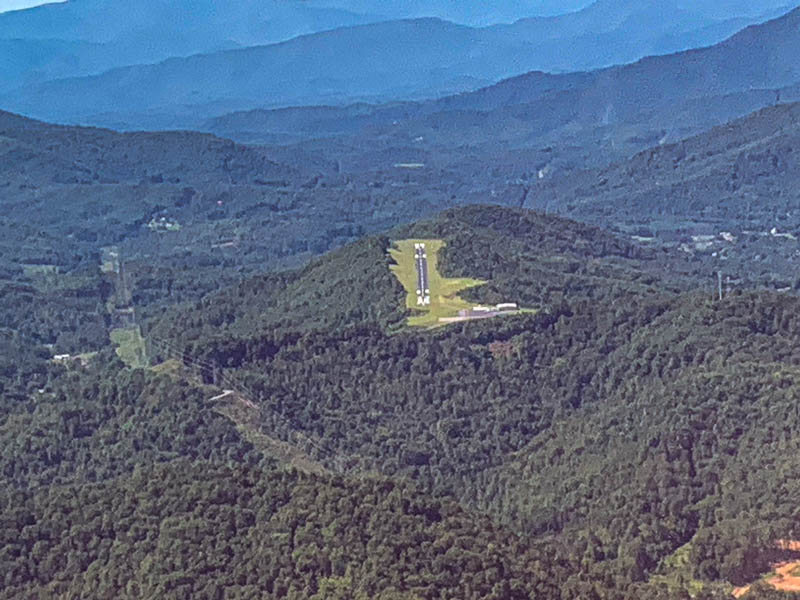
I landed in North Carolina at Jackson County airport (24A), on top of a mountain, surrounded by forests. Here, I hiked a day on the Appalachian Trail in North Carolina and spent some time in the beautiful Smokey National Park and the Cheyenne Indian reservation.
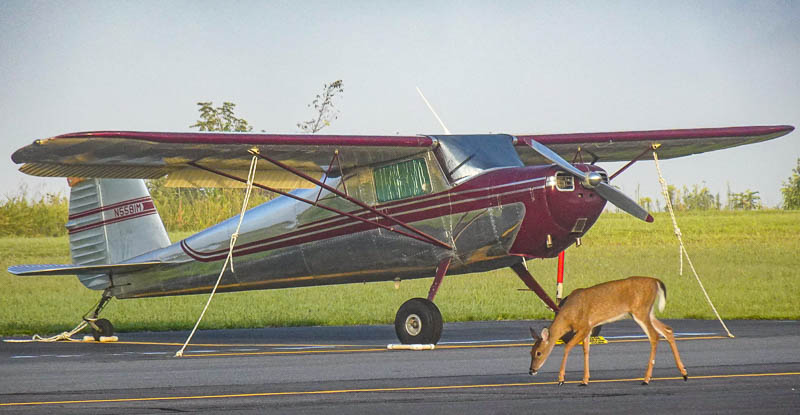
I had close encounters with bear and deer and would have loved to stay longer. But I had an appointment further west, so I flew via Winchester (KBGF) and Beech River (PVE) to Kennett (KTKX).
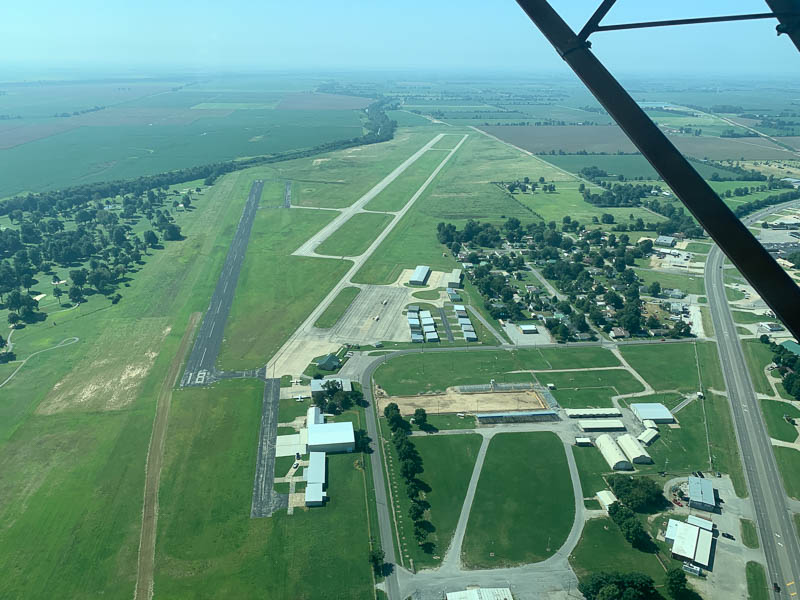
At Kennett, weather was good and avgas cheap, so I practiced some touch and goes, before I continued to the West Branson airport (KFWB) in Missouri and parked my 140 next to 3 others.
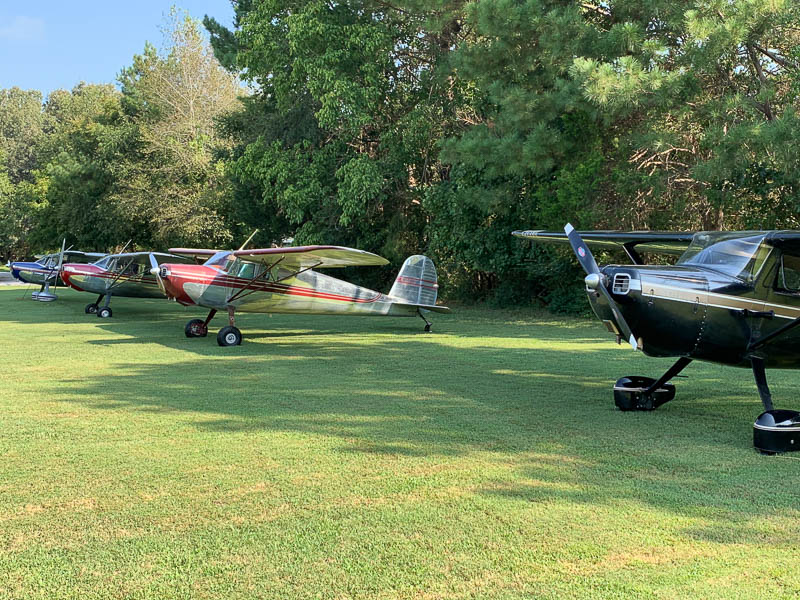
Within a few hours more 120s and 140s arrived. Most of their pilots knew what to expect, but for me, the annual convention of the Cessna 120/140 association was all new. They placed a "First timer" sticker below my name tag. I met many, many very friendly 140 pilots. Was a member of the association since I purchased the plane 2 years ago, but this was my first person-to-person contact with association members. Overwhelmed by the warmth & openness. If you are a member, but have never been to the convention: Don't wait any longer, try to go next time. They are not a closed group which stews in their own juice, they welcome first timers. You'll have a lot of fun!
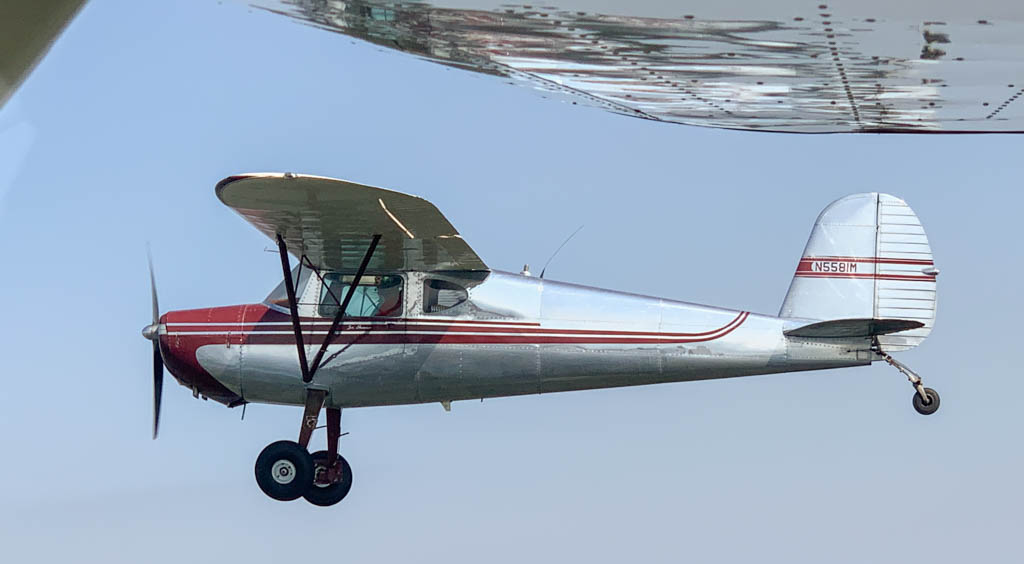
Way too early the 5 days were over and we all flew away in different directions. I was among the last to leave, heading northwest. My plan was to cross the Rocky's further north this time. The MSAs in Colorado are all above 10.000 ft, so I planned to cross in southern Wyoming. IFR = I Follow Roads is a good advise for any single engine airplane flying over sparesly populated areas, but roads (and especially railroad tracks) also don't climb too steep and use the lowest passes available ñ just what we 120/140 pilots need. But first I had to cross Kansas, the endless, flat, fertile plain. Suddenly, I noticed that I flew just across the label "United States of America" Foreflight placed on the sectional. Foreflight labels are usually placed right in the center, which means I crossed exactly the spot, Foreflight believes to be the center of the USA. Well, it didn't look any special to me. Later that day I landed at K82 (Smith Center) and there, at the Center Motel, I learned that US Geologists placed the official center of the USA (lower 48) just a few miles east, close to the village of Lebanon.
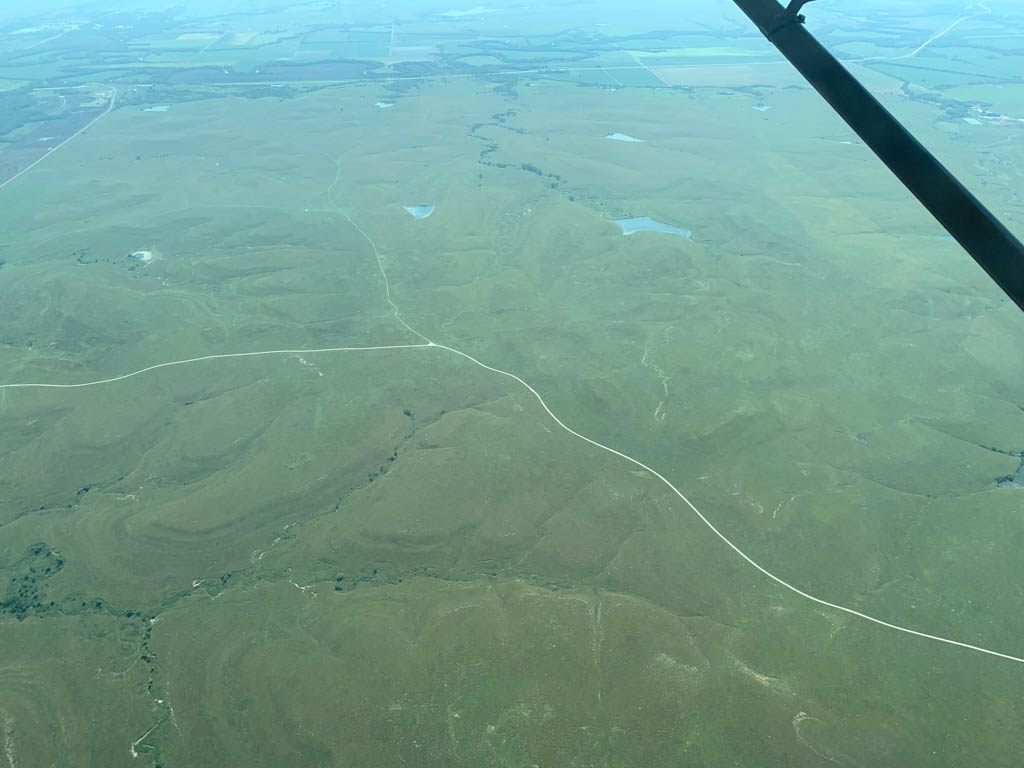
The next morning, as usual, I prepared to take off early, before sun rise. I remember that I watched the magnificant starry sky during the pre-flight. Of course I knew from my flight planning that some of the airports in the vicinity reported dense fog, but others didn't, so I expected thin fog patches below my route, with plenty of airports with VMC in-between. The take off, still in darknes, was normal. There aren't any artificial lights around K82. So when my ancient landing light suddenly showed me the fog bank ahead, which I entered just after becoming airborne, I was taken by surprise. Turn around, was my first thought, because I knew that their was VMC behind me, the fog bench hasn't covered the full airport yet, but turns close to the ground in IMC at an unfamiliar airport can be hazardous. Besides, most of the NOTAMS these days seem to be about erected obstacles. Are you checking all these coordinates? After a few seconds, I climbed out of the fog and reviewed what I just went through: Inadvertant flight into IMC! Has it really happened to me? How can I avoid it next time? What could I do better, if it happens again?
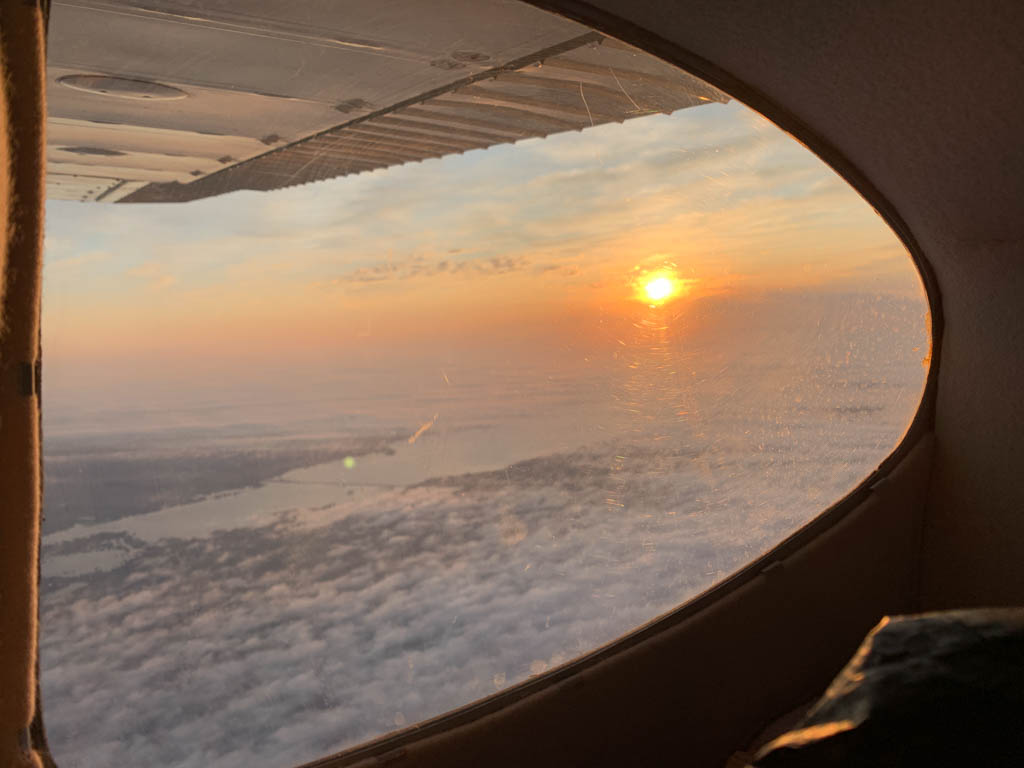
I crosssed Nebraska and the northeastern corner of Colorado to Scottsbluff, the last airport with a descent elevation (3967 ft).
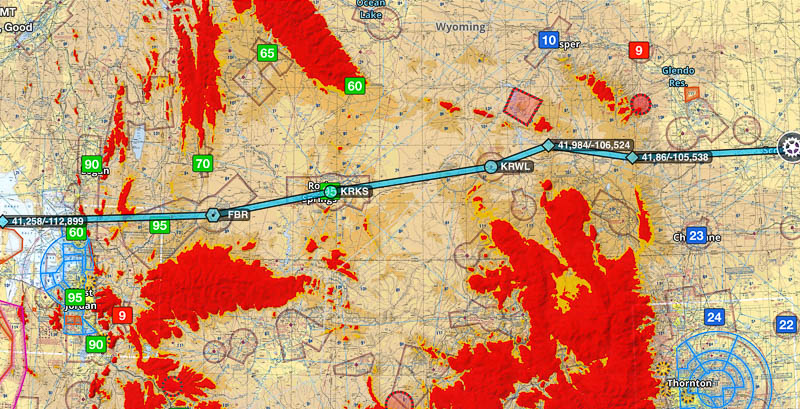
Fully fueled, I slowly gained altitude: 6500, 7500, 8500, 9500, average rate of climb, 100 ft per minute. My flight plan would clear all terrain when flying at 7500 ft. Flying at 9500 ft would give me a 2000 ft margin, which was my goal. The weather was excellent and the only thing which bothered me was the strong headwind. Most of the time, my ground speed was less then 50 miles per hour and even the trucks on I80 overtook me.
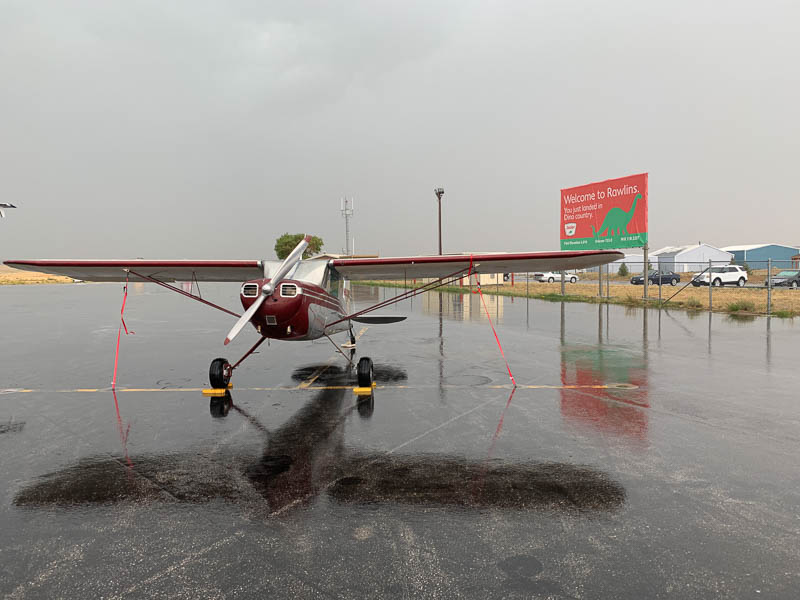
In Rawlins I stayed for the night. With an elevation of 6817 ft, I decided to take off early next morning. I was already comfortably setteled in my hotel, when a huge thunderstorm approached the city and the airport of Rawlins and the heavy winds and tormental rains associated with it began. This time, I didn't have any hangar. Would the tie-downs proof sufficient? I jumped into the courtesy car and drove back to the airport. "Your little plane dances in the wind.", said the friendly guy at FBO. Ropes and knots withstood the wind. But just after the storm had passed the airport, the lights at the airport went out. Total electrical power loss. Airport and city of Rawlins were without electricity. The manager at McDonalds sent all his people home and all shops closed.
The high elevation takeoffs at Rawlings and RKS (Southwest Wyoming, 6765 ft) the next morning where uneventful. Yes, it takes forever until our little 120/140 gains speed on these runways, but they are looooong and typically on little plateaus with few obsticales behind, so it is no problem. RKS has a 10.000 ft runway.

The picture above shows the last valley, just before reaching Brigham (KBMC), Utah, north of Salt Lake City.
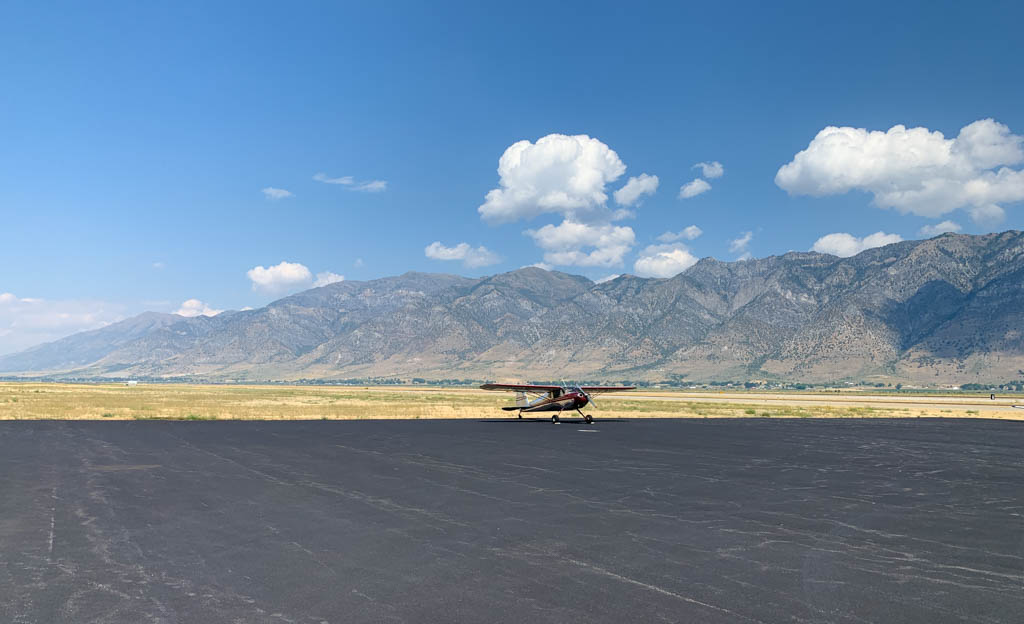
The pattern was full of student pilots and it took me some time until I found my gap in the pattern and landed. Since Missouri I wanted to change my engine oil, but never found a bucket and a friendly guy who said it would be ok to leave my old oil. Here at Brigham, I was welcomed by four old gentlemen who loved to help me with my old plane, probably because of old memories of the 50s and 60s, when they learned to fly in these birds. They showed me how to safety wire the oil filter ñ I had never before done this myself. As usual, they wanted nothing for their help. What a wonderful aviation community we have.
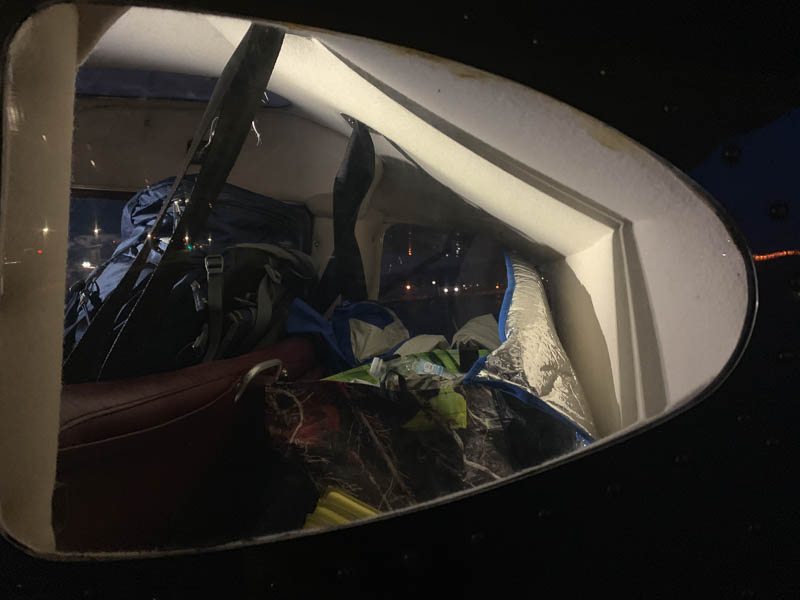
Crossed the great salt lake, landed in Wells and continued to Elko, Nevada (EKO). Spent the last night there. Picture above was taken at 5:44 AM, September 10th. 26 flights done, 3 more to do. There is a lot of mining activity in the area and Elko is their community center and the place where miners gamble on their days off. For my taste, the town and the airport was already too big. When I departed the next morning, there was even a Bombardier regional jet taking off ahead of me. As usual, they commented "nice airplane". Didn't I say that everybody loves our little taildraggers?
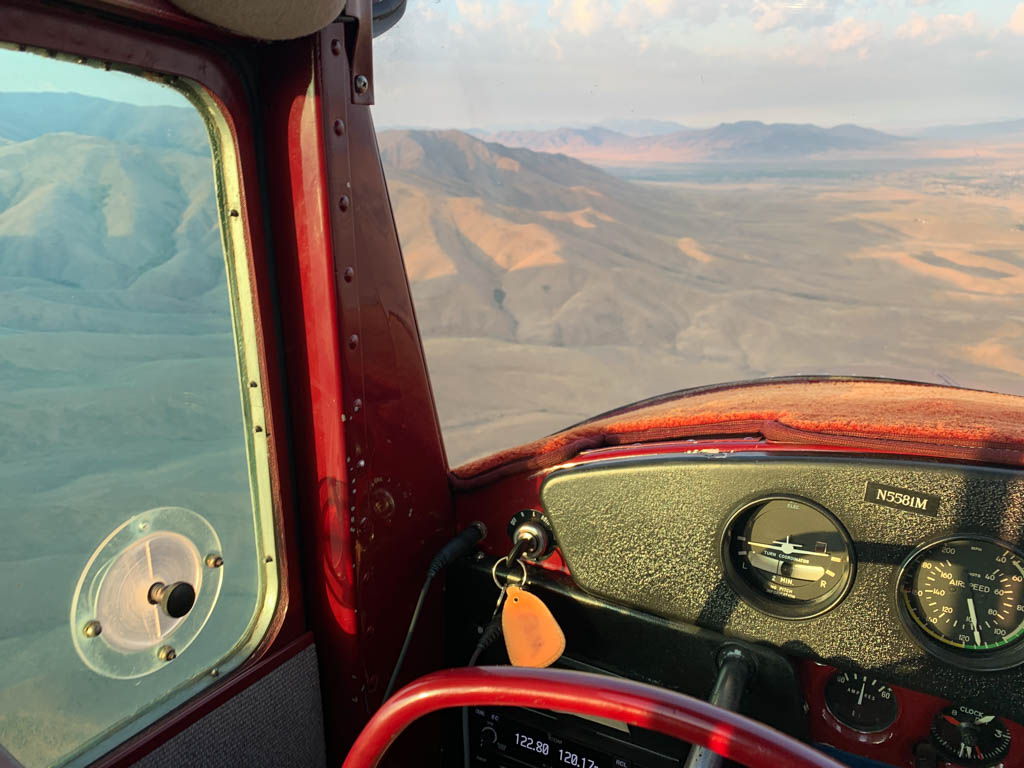
Many would say that flying over Nevada is boring, but I find it exiting. At times, the barren landscape is virginal, pristine. It is interesting to see the few signs of human activity and guess what they could be. A closed mine from the 19th century? Last years ATV tracks? An old well? A pilot of a single engine aircraft should always know where he/she would land if the engine quits. Dependent of where you fly, the relevant factors differ. Obviously, the most important thing is to bring it safely to the ground. But should you land at the road with some traffic (and the danger of hitting a car) or better on those dust tracks far from any potential help?
Weather was again no factor, but a TFR due to a planned rocket launch made me change my course. It was exactly the time of the planned launch and I looked intensely and tried to see something, but I didn't see any rocket launch. It was different some years ago. I flew an A340 back then and we had just taken off in Almaty, Kazachstan, when the russion controller told us that the airspace ahead of us is now closed and we have to circle at our position. My Copilot and I didn't speak any russian and the controller's english wasn't good enough to tell us the reason, so we waited, anxiously calculating our dimishing fuel reserves, when suddenly a new bright star appeared in the east. A Sojus rocket had just launched at Baikonur, 400 miles to the east. We saw the first stage separate and fall down to the ground and the second stage continue to orbit. A magnificient view!
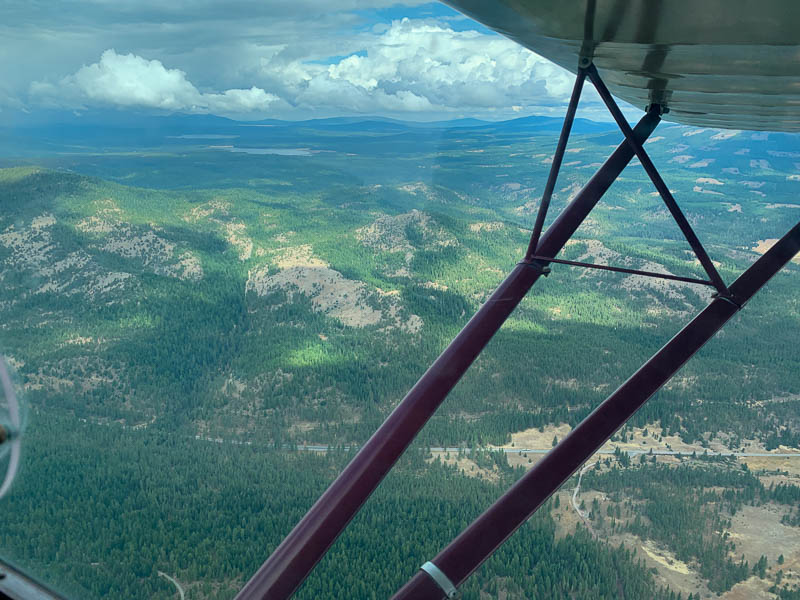
North of Pyramid Lake, I reached California. I overflew my planned stop in Susanville and struggled to stay VMC, as the clouds got lower and lower and the terrain higher and higher. I landed at Rogers (o05), waiting for better weather and to study the charts of the last mountains I would have to cross on this trip. I wouldn't say that flying an airliner IFR is easier than flying a single engine piston VFR, but it is certainly very, very different. Analyzing VFR weather is a skill, which constantly needs to be practiced and improved. I stared at the clouds and calculated where they started to obscure the mountains. I looked at the charts and asked myself: Can I fly through this valley? Will I stay below?
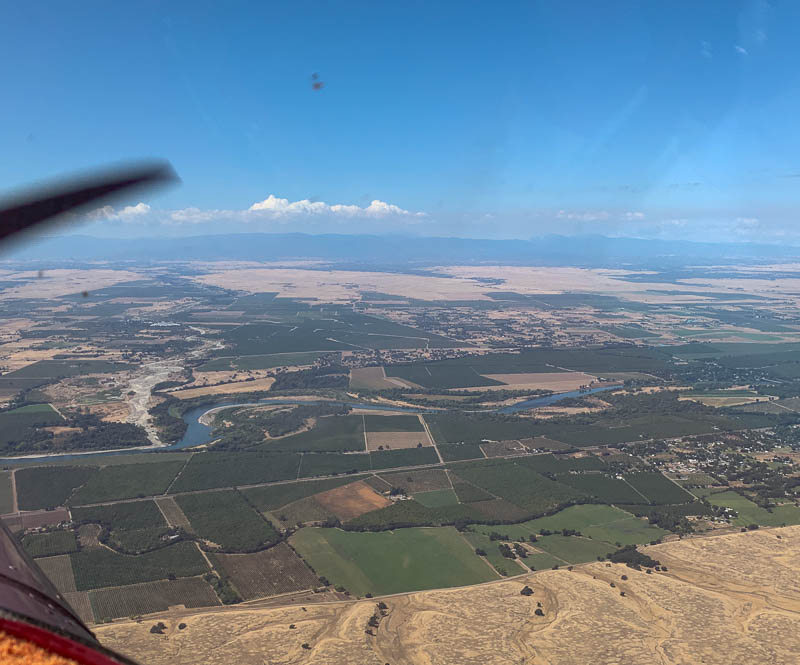
Then, the clouds went away and I had clear skies until reaching my destination Corning (0O4) in the central California valley.
I parked my 140 in the hangar I rented there, cleaned it after its long flight, said hello to the friendly folks of Rainbow Aviation and jumped into a taxi which drove me to Sacramento from where I flew to LAX and further to Buenos Aires. I feel confident with the 140 now. It is a good plane. A plane I trust, a plane I learned to know. I am looking forward of flying it again. Maybe to Argentina, we will see...